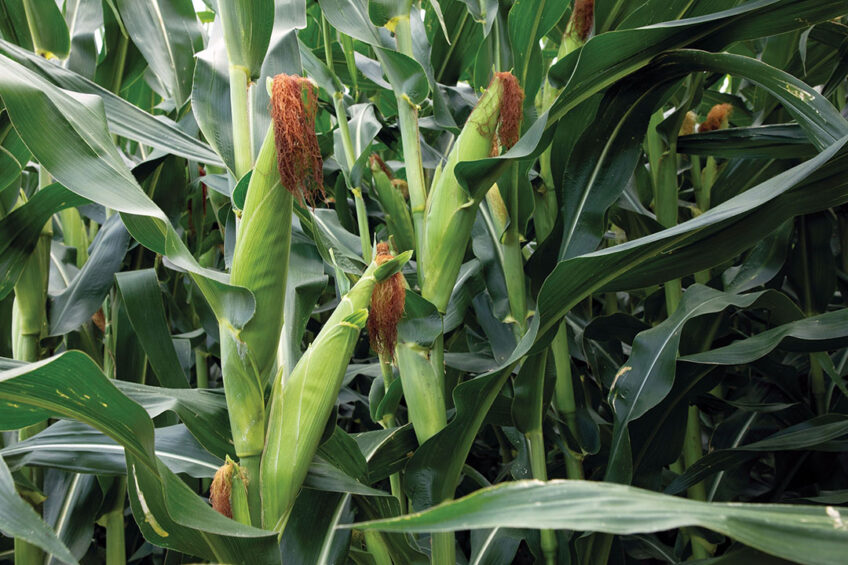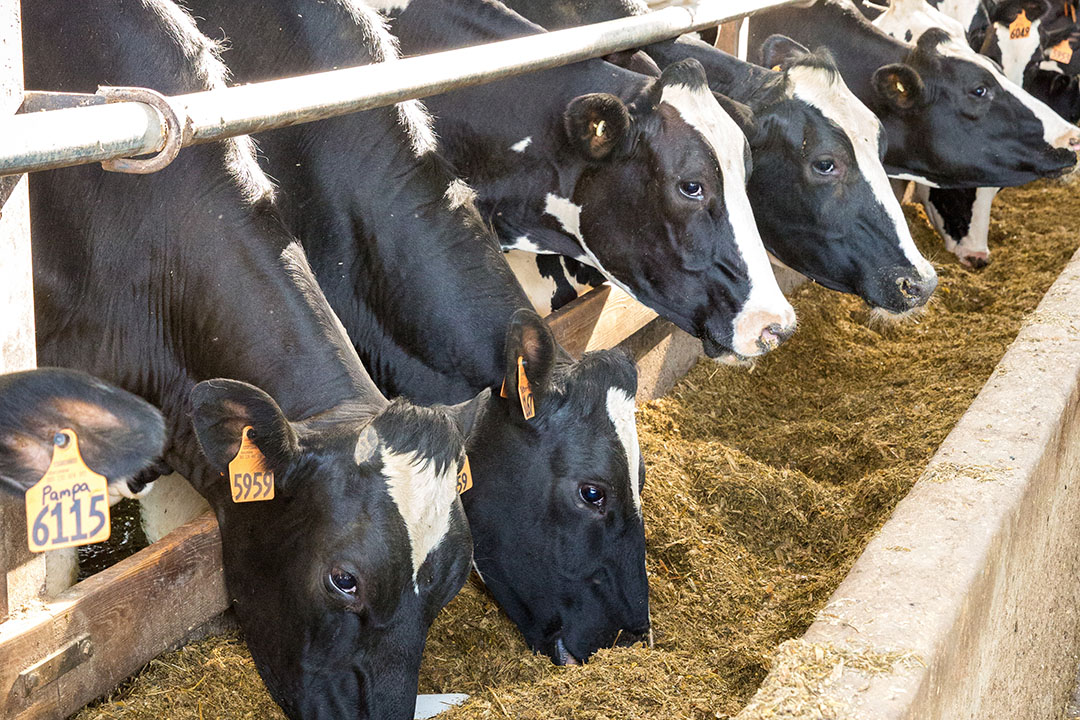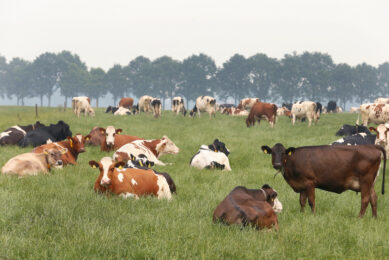More digestible corn for more energy absorption per bite

Breeding a crop plant to contain a given enzyme is new – and it’s working well in the case of Syngenta Seed’s Enogen corn, according to a large amount of independent research.
Using enzymes to increase the digestibility of crops is nothing new and, indeed, it’s now considered an effective and economically-feasible way to achieve higher feed efficiency in livestock farming. Using enzymes saves producers money because less feed is required to attain a given level of performance and it also significantly reduces the environmental impact of agriculture. But, breeding a crop plant to contain a given enzyme is new.
The enzyme in this case is alpha amylase. It rapidly converts the starch in corn to usable sugars, delivering more available energy to the cow with every mouthful of feed. About 20 years ago it was established that supplementing a cow’s diet with amylase has more potential to increase the efficiency of starch digestion in the rumen to attempt manipulation of rumen microbe activity.
Although results from the use of amylase as a feed additive is not completely consistent with cattle, a study from a few years ago published by a team of Brazilian scientists attained good results. This group fed amylase to lactating dairy cows, specifically 0.5 g of Ronozyme RumiStar amylase (DSM Nutritional Products of Switzerland) per kg of total mixed ration dry matter (39% corn silage, 11% rehydrated and ensiled mature corn grain and 12% finely-ground corn). They found (compared to no amylase) that dry matter intake was reduced by a whopping 1 kg/day and feed efficiency improved substantially (1.52 vs. 1.63) with a milk yield slightly better than the control.
Discovering the trait
Enogen corn contains a gene that results in the production of an alpha amylase. The Enogen trait was discovered when the Syngenta Seeds R&D team was exploring industrial enzyme candidates, explains Chris Cook, Syngenta head of business development.
“[The team] isolated organisms from marine vents for broad temperature and pH tolerance ranges,” he explains. “The amylase gene fragments from 3 of the organisms were used to develop a new version of the gene. This gene was linked to a promoter that causes the amylase protein to be distributed throughout the starchy endosperm of Enogen grain, resulting in the enzyme in Enogen corn that is active over a wide range of pH and temperature conditions and is not denatured by normal crop production, harvesting, storage, fermentation or feed processing activities.”
Research results – feed efficiency
When Enogen corn is fed to lactating dairy cows, it increases feed efficiency by about 5%, a highly significant outcome. This has been shown in many studies at 3 different US universities, the University of Nebraska-Lincoln from 2013 to 2018, Kansas State University from 2017 to 2018, and Penn State University in 2019. Note that many of these studies were complete when Enogen entered the US livestock feed market in 2017 after being used in the US biofuels sector since 2011. Enogen entered the livestock feed market in Canada last year in 2022.
A study published in 2021 by Penn State scientists in the Journal of Dairy Science (supported by the US Department of Agriculture and Syngenta) found that Enogen corn silage inclusion at 40% of dry matter in the diet of lactating dairy cows increased milk, milk protein, lactose yields and feed efficiency. The increased milk yield led to a decrease in enteric CH4 emission intensity, compared with the control silage.
Syngenta alsocommissioned peer-reviewed independent research by scientists at Kansas State University and Corn Belt Livestock Services on calves and found feed efficiency improved with Enogen corn compared to traditional corn. The research was published in 2022 in the journal Translational Animal Science.
An analysis in June 2023 was conducted for an average Canadian dairy cow producer with 100 Holstein milking cows, based on work by J.G. Lauer and also work by Dr Randy Shaver at University of Wisconsin. It found an ‘income over feed cost’ benefit of feeding Enogen of CAN$22 (€14.42) per cow per month.

Economic analysis – savings per milking cow
In 2022, Syngenta Seeds released a financial value assessment conducted in partnership with scientists at the University of Wisconsin-Madison and Rock River Laboratory, involving factors such as expected milk revenue and associated corn silage costs.
The team used modelling to conclude that US dairy producers using Enogen corn could potentially yield a savings of US$132 to US$208 (€125 to €196) per milking cow compared to feeding traditional corn.
At the time, team member Dr Randy Shaver, professor emeritus at the University of Wisconsin-Madison, commented on the ease with which dairy producers can achieve such good results. “When you add financial benefits of this magnitude to something that’s already able to improve feed efficiency just by changing corn hybrids, you’re going to get the attention of a lot of dairy producers,” he said.
Environmental benefits
Syngenta has also commissioned an independent dairy-specific Life Cycle Assessment of feeding Enogen in light of its ability to increase feed efficiency and reduce methane intensity. It was completed by a consulting firm called Sustainable Solutions Corporation.
The firm found that per 1,000 dairy cows, a dairy farm using Enogen corn could potentially reduce greenhouse gas production by over 1.4 million kg CO2e (equivalent to removing 314 passenger cars from the road for 1 year). Use of Enogen for a herd this size will also result in more than a 249-acre reduction in the acreage required to grow the required amount of corn (about 189 American football fields).
Extent of use
Enogen hybrids are available in a range of maturities, from 80 days to 107 days. According to Cook, this year there are nearly half a million acres of Enogen being grown in total in the US and Canada, which are the only countries in which it is currently available.
In terms of future outlook for growing that acreage, Cook says Enogen is gaining momentum, particularly in Canada. “A barrier has been a lack of awareness of the hybrids themselves,” she notes, “as well as their benefits.”
Besides the mentioned financial and environmental benefits, Cook adds that “Enogen hybrids maximise yield potential and silage quality when accurately positioned in fields through sound agronomic product placement from their local Enogen sales professional.” Enogen is meant to be used with the other technologies in the Syngenta system, such as Viptera, to control corn earworm.
Syngenta Seeds is also working on improvements to this hybrid line to further boost feed efficiency in specific targeted uses. Cook reports that the R&D team is working on Enogen-specific hybrids for silage-specific purposes, others for grain-specific and others still that are dual purpose. “The better we develop specific hybrids the more feed efficiency we can derive with better yields, characteristics and other benefits to the farmer,” he says.
Cook reports: “We launched 5 new Enogen hybrids this year. To put that into perspective, we launched the same total [previously] over a 4-year span. We’re excited about the continued focus and innovation on Enogen and the benefits it will give not only farmers, but also the environment.”
Join 13,000+ subscribers
Subscribe to our newsletter to stay updated about all the need-to-know content in the dairy sector, two times a week.










